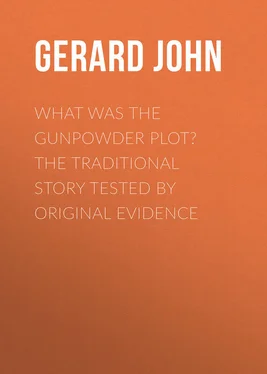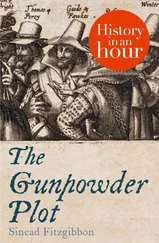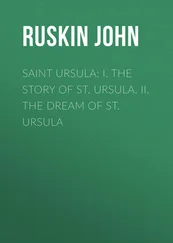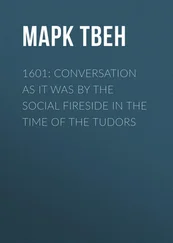John Gerard - What was the Gunpowder Plot? The Traditional Story Tested by Original Evidence
Здесь есть возможность читать онлайн «John Gerard - What was the Gunpowder Plot? The Traditional Story Tested by Original Evidence» — ознакомительный отрывок электронной книги совершенно бесплатно, а после прочтения отрывка купить полную версию. В некоторых случаях можно слушать аудио, скачать через торрент в формате fb2 и присутствует краткое содержание. Жанр: foreign_antique, foreign_prose, на английском языке. Описание произведения, (предисловие) а так же отзывы посетителей доступны на портале библиотеки ЛибКат.
- Название:What was the Gunpowder Plot? The Traditional Story Tested by Original Evidence
- Автор:
- Жанр:
- Год:неизвестен
- ISBN:нет данных
- Рейтинг книги:5 / 5. Голосов: 1
-
Избранное:Добавить в избранное
- Отзывы:
-
Ваша оценка:
- 100
- 1
- 2
- 3
- 4
- 5
What was the Gunpowder Plot? The Traditional Story Tested by Original Evidence: краткое содержание, описание и аннотация
Предлагаем к чтению аннотацию, описание, краткое содержание или предисловие (зависит от того, что написал сам автор книги «What was the Gunpowder Plot? The Traditional Story Tested by Original Evidence»). Если вы не нашли необходимую информацию о книге — напишите в комментариях, мы постараемся отыскать её.
What was the Gunpowder Plot? The Traditional Story Tested by Original Evidence — читать онлайн ознакомительный отрывок
Ниже представлен текст книги, разбитый по страницам. Система сохранения места последней прочитанной страницы, позволяет с удобством читать онлайн бесплатно книгу «What was the Gunpowder Plot? The Traditional Story Tested by Original Evidence», без необходимости каждый раз заново искать на чём Вы остановились. Поставьте закладку, и сможете в любой момент перейти на страницу, на которой закончили чтение.
Интервал:
Закладка:
"They were a few wicked and desperate wretches, whom many Protestants termed Papists, although the priests and the true Catholics knew them not to be such… They were never frequenters of Catholic Sacraments with any priest, as I could ever learn; and, as all the Protestant Courts will witness, not one of them was a convicted or known Catholic or Recusant." 97 97 P. 56.
Similarly Cornwallis, writing from Madrid, 98 98 November 25th, 1605, Stowe MSS. 168, 61.
reported that the king and Estate of Spain were "much grieved that they being atheists and devils in their inward parts, should paint their outside with Catholicism."
In view of evidence so contradictory, it is difficult, if not impossible, to form a confident judgment as to the real character of those whose history we are attempting to trace; but, leaving aside what is matter of doubt, the undisputed facts of their previous career appear to show unmistakably that they were just the men who would be ready to look to violence for a remedy of existing evils, and to whom it would not be difficult to suggest its adoption.
CHAPTER III.
THE OPINION OF CONTEMPORARIES AND HISTORIANS
We have now for so long a period been accustomed to accept the official story regarding the Gunpowder Plot, that most readers will be surprised to hear that at the time of its occurrence, and for more than a century afterwards, there were, to say the least, many intelligent men who took for granted that in some way or other the actual conspirators were but the dupes and instruments of more crafty men than themselves, and in their mad enterprise unwittingly played the game of ministers of State.
From the beginning the government itself anticipated this, as is evidenced by the careful and elaborate account of the whole affair drawn up on the 7th of November, 1605 – two days after the "discovery" – seemingly for the benefit of the Privy Council. 99 99 Gunpowder Plot Book , 129. Printed in Archæologia , xii. 202*.
This important document, which is in the handwriting of Levinus Munck, Cecil's secretary, with numerous and significant emendations from the hand of Cecil himself, speaks, amongst other things, of the need of circumspection, "considering how apt the world is nowadays to think all providence and intelligences to be but practices." The result did not falsify the expectation. Within five weeks we find a letter written from London to a correspondent abroad, 100 100 R.O. Roman Transcripts (Bliss), No. 86, December 10th, 1605 (Italian).
wherein it is said: "Those that have practical experience of the way in which things are done, hold it as certain that there has been foul play, and that some of the Council secretly spun the web to entangle these poor gentlemen, as did Secretary Walsingham in other cases," and it is clear that the writer has but recorded an opinion widely prevalent. To this the government again bear witness, for they found it advisable to issue an official version of the history, in the True and Perfect Relation , and the Discourse of the Manner of the Discovery of the Gunpowder Plot , the appearance of which was justified expressly on the ground that "there do pass from hand to hand divers uncertain, untrue, and incoherent reports and relations," and that it is very important "for men to understand the birth and growth of the said abominable and detestable conspiracy." The accounts published with this object are, by the common consent of historians, flagrantly untruthful and untrustworthy. 101 101 Mr. Jardine writes ( Criminal Trials , ii. p. 235), " The True and Perfect Relation … is certainly not deserving of the character which its title imports. It is not true , because many occurrences on the trial are wilfully misrepresented; and it is not perfect , because the whole evidence, and many facts and circumstances which must have happened, are omitted, and incidents are inserted which could not by possibility have taken place on the occasion. It is obviously a false and imperfect relation of the proceedings; a tale artfully garbled and misrepresented, like many others of the same age, to serve a State purpose, and intended and calculated to mislead the judgment of the world upon the facts of the case." Of the Discourse he speaks in similar terms. ( Ibid. , p. 4.)
We likewise find Secretary Cecil writing to instruct Sir E. Coke, the Attorney-General, as to his conduct of the case against the conspirators, in view of the "lewd" reports current in regard of the manner in which it had been discovered. 102 102 R.O. Dom. James I. xix. 94. Printed by Jardine, Criminal Trials , ii. 120 (note).
The same minister, in the curious political manifesto which he issued in connection with the affair, 103 103 Answere to certaine Scandalous Papers, scattered abroad under colour of a Catholic Admonition. (Published in January, 1605-6.)
again bears witness to the same effect, when he declares that the papists, after the manner of Nero, were throwing the blame of their crime upon others.
Clearly, however, it was not to the papists alone that such an explanation commended itself. The Puritan Osborne 104 104 Traditional Memoirs , 36. Of this writer Lord Castlemaine says, "He was born before this plot, and was also an inquisitive man, a frequenter of company, of a noted wit, of an excellent family, and as Protestant a one as any in the whole nation."
speaks of the manner in which the "discovery" was managed as "a neat device of the Treasurer's, he being very plentiful in such plots." Goodman, Anglican Bishop of Gloucester, another contemporary, is even more explicit. After describing the indignation of the Catholics when they found themselves deceived in their hopes at the hands of James, he goes on: "The great statesman had intelligence of all this, and because he would show his service to the State, he would first contrive and then discover a treason, and the more odious and hateful the treason were, his service would be the greater and the more acceptable." 105 105 Court of King James (1839), i. 102.
Another notable witness is quoted by the Jesuit Father Martin Grene, in a letter to his brother Christopher, January 1st, 1665-6: 106 106 Stonyhurst MSS., Anglia , v. 67.
"I have heard strange things, which, if ever I can make out, will be very pertinent: for certain, the late Bishop of Armagh, Usher, was divers times heard to say, that if papists knew what he knew, the blame of the Gunpowder Treason would not lie on them." In like manner we find it frequently asserted on the authority of Lord Cobham and others, 107 107 E.g. , in the Advocate of Conscience Liberty (1673), p. 225.
that King James himself, when he had time to realize the truth of the matter, was in the habit of speaking of the Fifth of November as "Cecil's holiday."
Such a belief must have been widely entertained, otherwise it could not have been handed on, as it was, for generations. It is not too much to say that historians for almost a century and a half, if they did not themselves favour the theory of the government's complicity, at least bore witness how widely that idea prevailed. Thus, to confine ourselves at present to Protestant writers, Sanderson, 108 108 History of Mary Queen of Scots and James I. , p. 334. Bishop Kennet, in his Fifth of November Sermon, 1715, boldly declares that Sanderson speaks not of Cecil the statesman, but of Cecil "a busy Romish priest" (and, he might have added, a paid government spy). The assertion is utterly and obviously false.
acknowledging that the secretary was accused of having manipulated the transaction, says no word to indicate that he repudiates such a charge. Welwood 109 109 Memoirs , p. 22.
is of opinion that Cecil was aware of the Plot long before the "discovery," and that the famous letter to Monteagle was "a contrivance of his own." Oldmixon writes 110 110 History of England, Royal House of Stuart , p. 27.
"notwithstanding the general joy, … there were some who insinuated that the Plot was of the King's own making, or that he was privy to it from first to last." Carte 111 111 General History of England , iii. 757.
does not believe that James knew anything of it, but considers it "not improbable" that Cecil was better informed. Burnet 112 112 History of His Own Times , i. 11.
complains of the impudence of the papists of his day, who denied the conspiracy, and pretended it was an artifice of the minister's "to engage some desperate men into a plot, which he managed so that he could discover it when he pleased." Fuller 113 113 Church History , Book X. § 39.
bears witness to the general belief, but considers it inconsistent with the well-known piety of King James. Bishop Kennet, in his Fifth of November sermon at St. Paul's, in 1715, talks in a similar strain. So extreme, indeed, does the incredulity and uncertainty appear to have been, that the Puritan Prynne 114 114 Antipathie of the English Lordly Prelacie, to the regall Monarchie and Civill Unity , p. 151.
is inclined to suspect Bancroft, the Archbishop of Canterbury, of having been engaged in the conspiracy; while one of the furious zealots who followed the lead of Titus Oates, mournfully testified that there were those in his day who looked upon the Powder Treason "as upon a romantic story, or a politic invention, or a State trick," giving no more credence to it than to the histories of the "Grand Cyrus, or Guy of Warwick, or Amadis de Gaul," – or, as we should now say, Jack the Giant Killer.
Интервал:
Закладка:
Похожие книги на «What was the Gunpowder Plot? The Traditional Story Tested by Original Evidence»
Представляем Вашему вниманию похожие книги на «What was the Gunpowder Plot? The Traditional Story Tested by Original Evidence» списком для выбора. Мы отобрали схожую по названию и смыслу литературу в надежде предоставить читателям больше вариантов отыскать новые, интересные, ещё непрочитанные произведения.
Обсуждение, отзывы о книге «What was the Gunpowder Plot? The Traditional Story Tested by Original Evidence» и просто собственные мнения читателей. Оставьте ваши комментарии, напишите, что Вы думаете о произведении, его смысле или главных героях. Укажите что конкретно понравилось, а что нет, и почему Вы так считаете.












